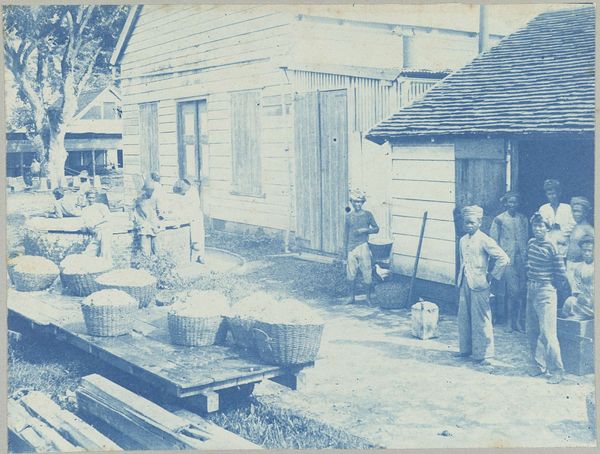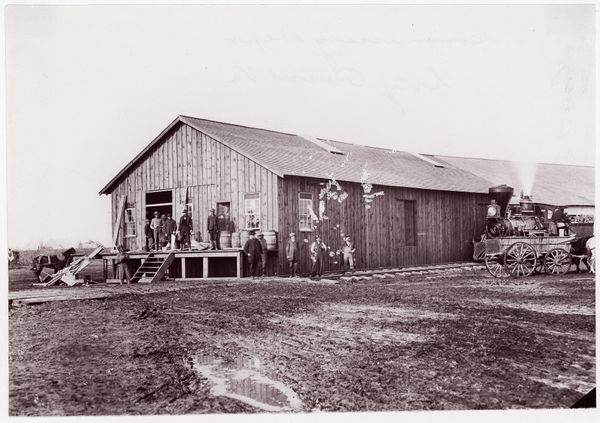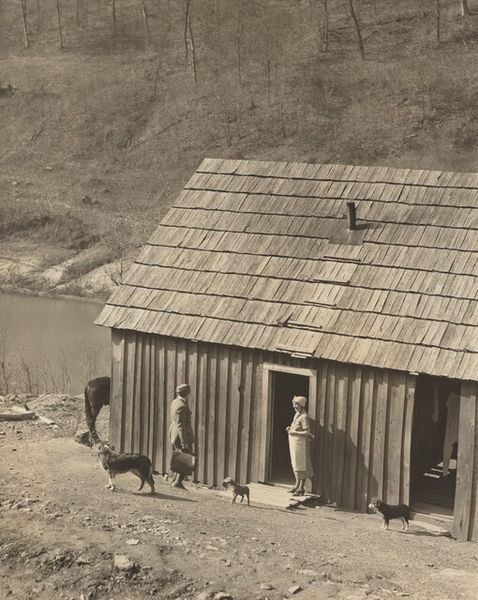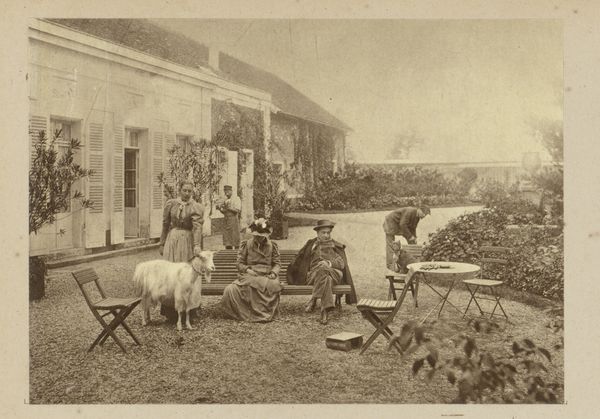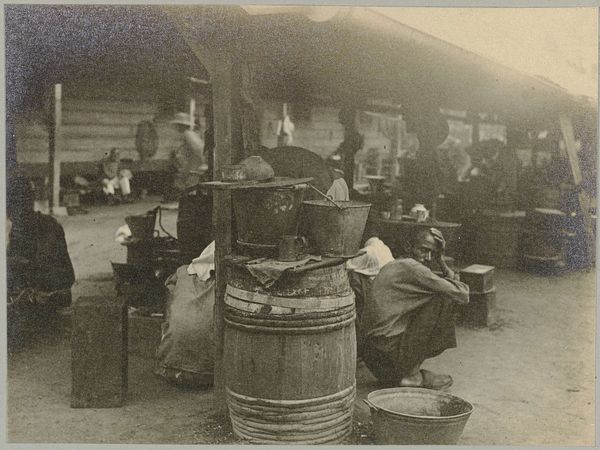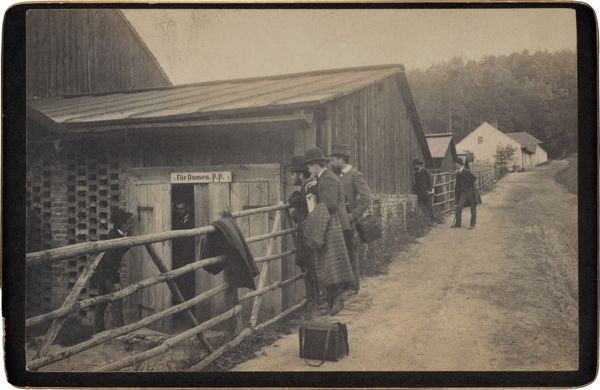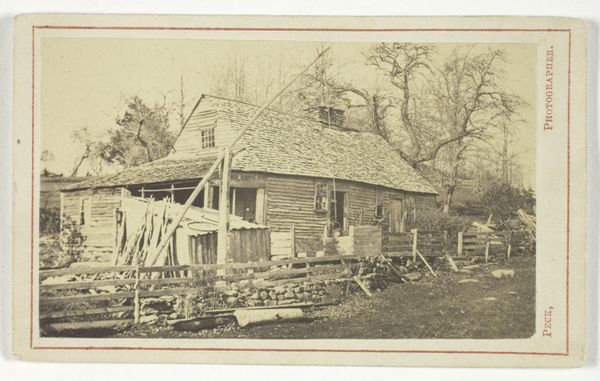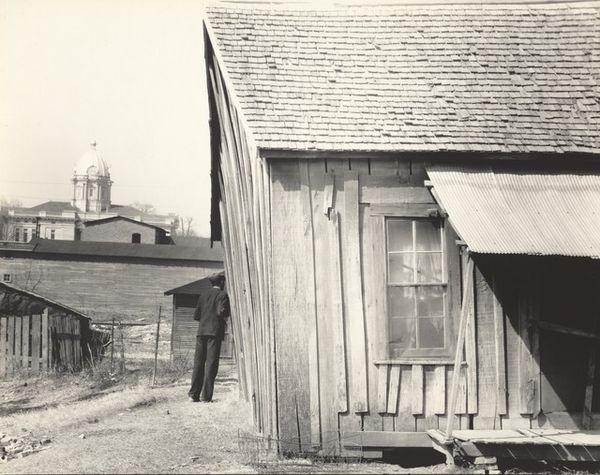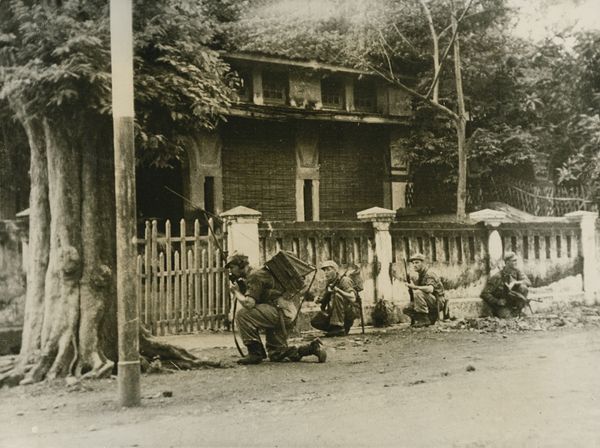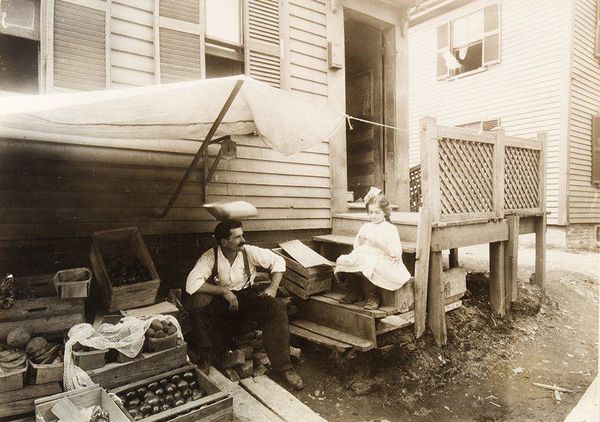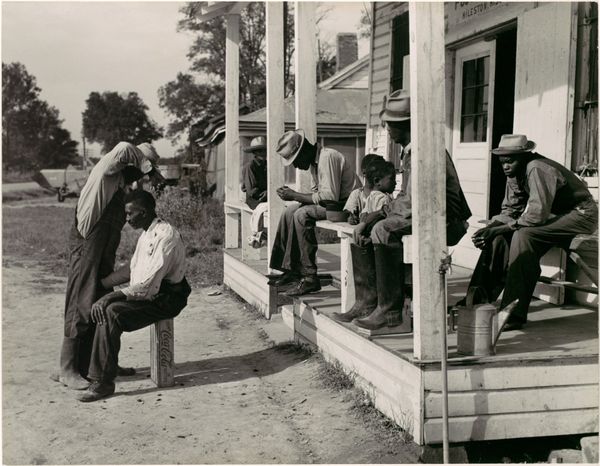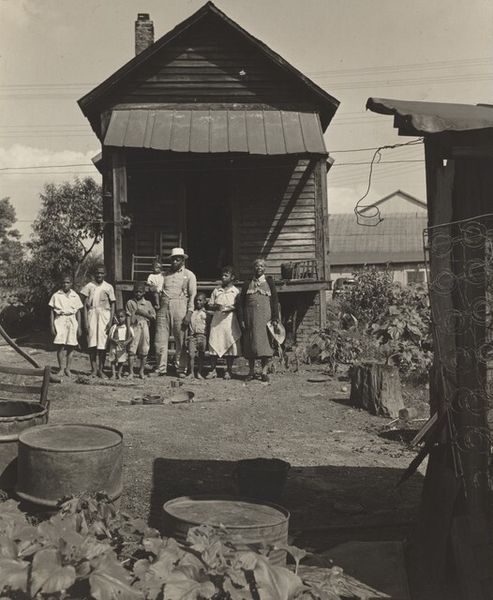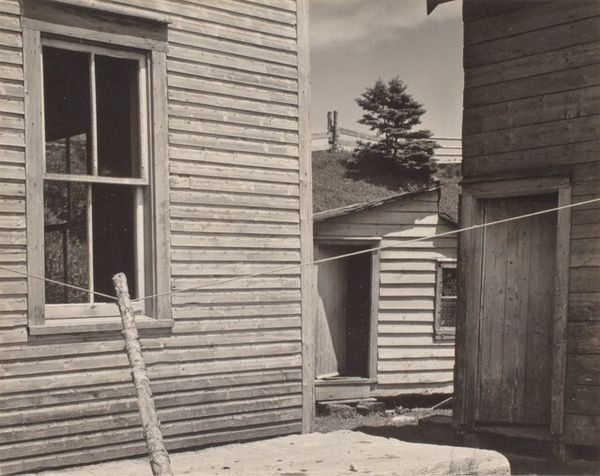
photography
#
landscape
#
archive photography
#
photography
#
historical photography
#
19th century
#
genre-painting
#
realism
Dimensions: height 120 mm, width 164 mm
Copyright: Rijks Museum: Open Domain
Curator: This photograph by Hendrik Doijer, entitled "Aanvoer van cacao op 'Ma Retraite'," taken sometime between 1903 and 1910, presents us with a snapshot of labor on a Surinamese cocoa plantation. Look at the sheer quantity of harvested goods. Editor: The first thing that strikes me is the texture. The rough-hewn wood of the buildings juxtaposed against the soft, overflowing baskets of cacao… it's almost palpable. There's a sense of industry, but also a kind of still quiet hanging in the air. Curator: Indeed. Note the careful composition. The image foregrounds the woven baskets laden with cacao, emphasizing the raw material. Further back, we observe figures engaged in various tasks, all contributing to the process. This composition draws our attention to the collective effort, the very materiality of the operation. How do the means of production translate the human cost into the product's ultimate value? Editor: And what lives were attached to those baskets of cacao… Do you notice how most of the people aren’t making eye contact with the camera? Almost a sense of guardedness or a quiet acknowledgement of what’s being captured. Almost voyeuristic for us as viewers in the present. Curator: That very point allows us to engage in critical material analysis. These people *are* the mechanism here, their actions essential to commodification. Doijer’s role then turns somewhat complex: Is this simple record, an advertisement for efficient colonialism? Editor: It's that stillness in their eyes—there’s a narrative there that’s definitely unwritten, untold, just lurking right under the surface. It fills me with this strange bittersweet longing. I can't articulate what *that* is in relation to a contemporary perspective. Curator: Ultimately, pieces like these offer complex perspectives on labor, raw material, and the mechanisms of commodity culture. It compels the viewer to grapple with the complex historical backdrop, the foundation on which products, global markets even, were constructed. Editor: This piece lingers; I keep wondering what one of those workers might’ve become, generations onward. That’s the magic—and the ache—of great art.
Comments
No comments
Be the first to comment and join the conversation on the ultimate creative platform.
